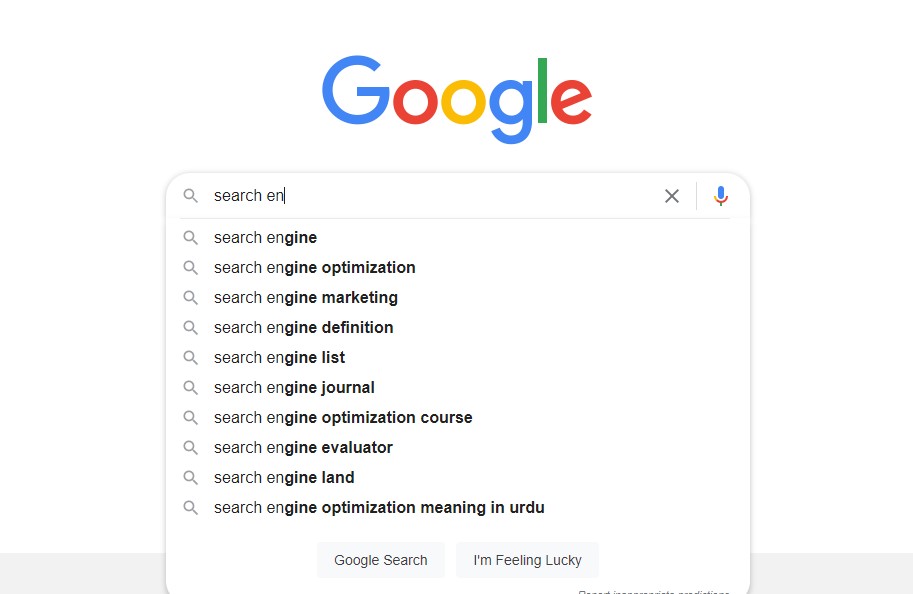SEO is one of the most versatile channels for driving designated traffic to your site. There are several ways to improve your google keyword ranking below you can find best ways to improve your SEO.
Table of Contents
Someone is currently searching Google for a new product, service, or solution to their problem, which your company is uniquely suited to supply.
Will they find their way to your website, where they may discover how you have just what they need?
Unfortunately, if your website does not appear on the first page of Google searches, the answer is usually no. There are several causes for this.
Firstly, Google dominates the search engine market, with more than 85% of global traffic and 270 million unique visitors in the U.S. alone.
Second, 75% of internet users never look past the first page of search results.
When you consider that the top search result receives 34.36 percent of all clicks, it’s easy to see why search engine optimization (SEO) is so vital.
But you already knew that — after all, that’s why you’re reading this post. You’re probably aware that SEO is a marathon rather than a sprint.
What’s an SEO professional to do?
In the past, the solution was to stuff keywords all over your website, assuming that more was better. Those were the days.
The sophistication of Google’s algorithm has increased, allowing it to better understand the purpose underlying requests.
This means that sites that provide better answers to those searches are valued more highly than those that are just jam-packed with related terms and phrases.
You can’t only focus on what search engines are looking for if you want your website to rank well.
You should also think about how visitors to your site feel. You must consider the whole value your website delivers to users before optimising your content to achieve the desired results.
Let’s take a closer look at some of the ranking variables and talk about how you may utilize keywords more effectively to increase search traffic.
1. Measure Your Rankings
Measuring your rankings is the first (and perhaps most obvious) place to start.
You won’t know how far you’ve come or how much you’ve progressed unless you have a firm idea of your baseline keyword performance.
I strongly advise you to export all of this useful keyword data and save it for future use. If nothing else, it will demonstrate how much you’ve improved your SEO skills.
Some of us may have learnt the hard way, but with any particular technology, you never know when things will change – whether it’s how data is reported, what information we have access to, or anything else.
Export Google Search Console keyword data and Google Analytics landing page traffic (organic and total).
Analyzing this data will give you a good idea of:
- Your most valuable keywords/landing pages.
- The most immediate opportunities for improvement.
- Keywords/landing pages that are underperforming.
Concentrate on keywords that rank in positions five through fifteen (where you’re hovering between the bottom of Page 1 and the top of Page 2) on Google.
It’ll be easier to rank these terms at the top of Google’s first page, giving you some quick successes to brag about to your customer or supervisor.
2. Target The Right Keywords
It’s critical to understand both the search intent and the difficulty of ranking for your keyword targets if you want to make sure they’re aligned with your overall business goals and provide actual value.
While terms may have a specific meaning to you, they may have a completely different meaning in Google, and vice versa.
Knowing if the intent is informational/educational, transactional, or navigational can assist you to figure out where users are in the sales funnel.
Doing a thorough SERP analysis is essential. Look at what’s currently ranking in the top search result for your core keyword targets including:
- Related searches.
- People also ask.
- Google autocomplete suggestions.
- Other advanced search features.
Knowing what it takes to rank for a specific keyword will help you determine what content development activities will be required, as well as design a content creation strategy.
The SEO Content Template from Semrush is ideal for this type of examination.
Simply type in a keyword, and the tool will analyse what appears in Google’s top results and make SEO-friendly content recommendations.
Cross-referencing your organic keyword research with data from paid advertising can also aid in the discovery of fresh opportunities and the filling of gaps.
Long-tail searches should not be overlooked. While they may have a lesser search traffic, you could be missing out on highly focused, ready-to-buy audiences.
3. Clean Up Your Site Structure
The structure of your website has a significant impact on SEO. Establish a strong foundation for yours by eliminating any technological difficulties that could affect your organic keyword visibility.
Search engines and users should be able to find and browse site pages with ease.
Your keyword rankings will most certainly suffer if your website is tough to navigate for users and crawl for search engines.
In turn, if your website is easy to use for both users and Google, your rankings will almost certainly improve.
Make sure your website is well-structured, that any broken links are fixed, and that any duplicate content issues are resolved.
To guarantee that all major technical issues are handled, a full technical SEO audit is required.
4. Pay Attention To User Experience Signals
When it comes to driving organic search exposure, user experience and brand equity are crucial.
While user experience may not be a search engine marketer’s direct job, it’s critical that user experience and SEO operate in tandem – especially because Google’s algorithm has regularly factored UX into page results.
Use Google’s Core Web Vitals report to confirm that visitors are interacting with your website.
This tool tracks the time it takes for each page on your site to load and delivers data that shows you which pages are performing well and which need improvement.
Another crucial aspect of your site’s UX to consider is its responsiveness.
In 2017, mobile web browsing overtook desktop for the first time, accounting for more than 54% of global traffic.
You will have a higher bounce rate if your website is not responsive, which will have a negative impact on your ranking.
Here are some other elements that present an opportunity to improve UX and SEO:
- Keyword research: Confirm that you’re targeting keywords that have the right search intent and are aligned with the language that your target audiences use.
- Page tagging: Ensure page tagging is engaging and encourages clicks to your website (title tags, meta descriptions, and main headings).
- Content optimization: Keep users on the page and provide them with another logical destination or next step. This involves everything from the navigation to the copy, internal cross-linking, and calls-to-action on your site.
- Page speed: Give users the content they are requesting quickly and seamlessly across devices. Compress images, be mobile-friendly, clean up your code, and speed up your server.
5. Optimize For Users & Search Engines
Many of us become so focused on optimising material for Google that we lose sight of the goal: to reach a highly targeted group of humans.
While search engines and humans read and digest content in different ways, there are some similarities that will help us create content that will appeal to both.
Both robots and humans want us to be:
- Be clear and concise.
- Provide accurate information.
- Avoid jargon.
- Cover-related subtopics.
This is crucial to remember right from the beginning of your content development process.
Header tags are crucial when it comes to making our material easier to understand for both visitors and search engines.
Proper header tags will not only improve the readability of your material, but they will also ensure that search engines can follow the hierarchy of what is most important on the page.
Images should also be taken into account since more appealing imagery can make a significant difference for users.
This also gives you the chance to improve your search engine optimization by using ALT text and file names.
6. Create Eye-Catching & Engaging Titles
Dare I state that a webpage’s title tags are the most significant SEO element?
It’s the first thing visitors see in search results and on social media, not simply because it’s an SEO recommended practice.
The title tag is your best chance to attract a user’s attention and persuade them to click through to the page.
Determine which page you want to rank for each keyword goal, and then devise a strategy for making your title stand out among the crowd.
Yes, the keyword target should be near the start of the title tag, but what other way can you induce users to click?
BuzzSumo examined 100 million headlines and discovered the following:
- Emotional headlines drive interactions.
- Curiosity and voyeurism gain engagement.
- List posts and the number 10 in headlines are extremely powerful.
Although meta descriptions do not have a direct impact on rankings, they should be used in conjunction with title tags. If feasible, include the term as well as a clear call-to-action for users.
The purpose of your title tag and meta description should be to describe the advantage to users, elicit emotion, and encourage engagement – all while following SEO best practices.
7. Promote Your Content Strategically
I mentioned it briefly above, but it’s also critical to use non-SEO methods to raise awareness of your assets and aid your link-building efforts.
The more people that see your material, the more chances you have to:
- Generate inbound links.
- Drive social media shares.
- Gain traction for the piece.
- Rank better.
While different advertising strategies may be appropriate for different types of material, keeping a checklist handy is always a good idea.
This way, when it’s time to promote an asset, you’ll be prepared with a list of all options.
This could include:
- Distributing across social media channels.
- Pushing out an email to subscribers.
- Encouraging shares from internal team members.
- Reaching out to those mentioned in the asset.
- Setting up Google Alerts to monitor conversations around the topic.
- Sharing directly with certain experts or influencers.
- Answering related questions on Quora or other forums.
- Advertising on social media.
- Identifying existing internal cross-link opportunities.
- Creating a SlideShare presentation or repurposing the asset in other forms.









